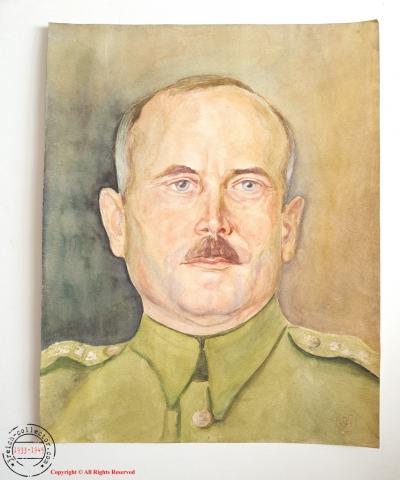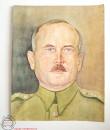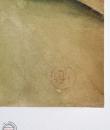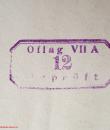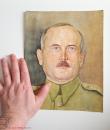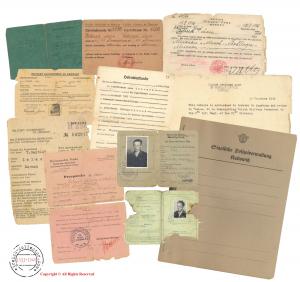Watercolor Portrait 1939 of POW from Murnau Oflag VII A
| Price: | $230.00 |
Very high quality artwork portrait of a Polish Army officer done using watercolor technique in 1941 who was captured during the invasion of Poland in 1939 and taken to POW camp Murnau Oflag VII A. On back side is stamp from censorship in Murnau. This is a portrait based on a picture of his officer period. Czesław Dąbrowa was born in 1899 in Bochnia, in a large family. Father Jozef was a tertiary in the WSR in Tarnow, and earlier a squadmaster in the 2nd Uhlan Regiment. Mother Helena, nee Jędrychowska, was the sister of Feliks, Stefan and Marian, Bochnia legionnaires, and after the war soldiers of the Polish Army. In such a patriotic environment, Czesław absorbed dreams of an independent Poland. While in the 5th grade, he volunteered for the Legions. He returned to school in 1918 and started working with Kawęcki. Recruitment to the Student Section was strict so that its members could be fully relied upon. The spirit of organization was simply brilliant [...]. The discipline was extraordinary, which was not easy if we take into account that we were dealing with colleagues [...] - recalled Kawęcki. As former legionnaires, the youth actually fell in love with them, despite the dire consequences. A course for privates and non-commissioned officers was conducted in the Section. They were taught to use weapons. Its activists took part in subversive actions directed against the partitioning authorities, organized by Marian Styliński's Flight Unit. Among the members there was also Adam, Czesław's brother, who was 3 years younger, and also a WSR student. On the memorable night of October 30/31, 1918, the section was present in the palace of the Shooting Society in the City Park, and then at the railway station, where it took part in the uprising for independence. The Dąbrowa brothers, after fighting to defend Polish borders, tied their life paths with the army. In May 1919, they passed their high school diploma. Czesław achieved the rank of captain, in the last years before the next war, working in the Border Protection Corps. Adam served in the aviation, in 1939 being promoted to major. At that time, they both received the Independence Medal. In September 1939, Czesław was captured by the Germans and spent the entire war in Oflag VIIA Murnau. Through Romania, Adam first went to France, and then to England. His knowledge and experience came in handy in the air combat against the Luftwaffe. For several months, at the turn of 1942 and 1943, he even commanded the 301st Bomb Squadron. He ended the war with the rank of colonel. He stayed in England, where he died in 1988. Czesław decided to return to Poland in 1947. He settled in Kłodzko, where he worked as an accountant in a mechanical technical school. In 1973 he was appointed reserve major. He died in Nowy Sącz in 1992. Oflag VII-A Murnau was a German Army POW camp for Polish Army officers during World War II. It was located 2 km (1.2 mi) north of the Bavarian town of Murnau am Staffelsee. The camp was created in September 1939. It consisted of an enclosure 200 m (660 ft) square, surrounded with barbed wire and guard towers. Immediately after the German invasion of Poland, at the beginning of World War II, some 1,000 Polish officers were imprisoned there. On April 27, 1942, additional Polish POWs were transferred there from the so-called "Generals' Camp" Oflag VIII-E in Johannisbrunn, Sudetenland (now Janske Koupele, Czech Silesia). After the failed Warsaw Uprising and "Operation Tempest" more prisoners were brought there from Poland. By early 1945 the number of POWs held in the camp reached over 5,000.The camps was liberated by troops of the U.S. 12th Armored Division on 29 April 1945Size 29,5x23cm
